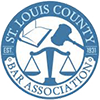After a car accident in Missouri, one of the first and most important questions is, “Who was at fault?” Fault determines who is legally responsible for damages, how much compensation may be available, and what portion of those damages each party must pay. Because Missouri follows a unique fault system, the process is often more complicated than most people realize. Understanding how fault is determined can make the difference between a fair settlement and being left with expenses you should not have to cover.
Missouri is one of the states that applies a “pure comparative fault” rule. This system allows injured parties to recover damages even if they share some responsibility for the accident. However, the amount of compensation is reduced by the percentage of fault assigned to them. For example, if your damages equal $100,000 and you are found 20 percent at fault, you can still recover $80,000. If you were 80 percent at fault, you could still recover $20,000. Even someone 99 percent at fault can technically recover 1 percent of their damages.
This system is very different from “modified comparative fault” states, where recovery is barred once a party reaches a certain percentage of responsibility. In Missouri, there is no cutoff. This opens the door for more claims but also gives insurance companies an incentive to exaggerate a victim’s role in causing the accident. The higher your percentage of fault, the less the insurer has to pay, so fault is almost always disputed in some way.
Because fault directly impacts the outcome of a case, the evidence collected after a car accident is critical. Several types of evidence commonly play a role in Missouri accident claims:
Each piece of evidence adds to the overall picture of fault. Collecting as much as possible early on is essential because details fade and records may be lost over time.
Some types of accidents tend to follow predictable fault patterns, though every case must still be evaluated on its own facts. Here are a few common scenarios:
Even in situations that seem clear-cut, insurers often argue that multiple parties contributed to the accident. This is why evidence collection and legal guidance are so important.

After a crash, insurance companies immediately begin their own investigations. While they may appear to be neutral, their true goal is to minimize payouts. Adjusters may suggest that you contributed more to the accident than you believe, or they may pressure you into a quick settlement before all of your damages are fully known. Every percentage of fault they can place on you directly reduces the money they have to pay.
Insurance companies may use recorded statements, inconsistencies in your recollection, or even gaps in medical treatment as ways to argue that your injuries are not as severe or that you share more fault than is fair. Without legal representation, many victims accept reduced settlements that do not truly cover their expenses.
Working with an attorney is one of the best ways to ensure fault is determined fairly. A lawyer can conduct an independent investigation, secure evidence, and consult with accident reconstruction experts when necessary. Attorneys know how to challenge insurance company tactics, highlight key evidence, and present a strong case in negotiations or at trial.
Legal representation is especially valuable in comparative fault states like Missouri. Even reducing your percentage of fault by a small margin can mean thousands of dollars more in compensation. For example, shifting responsibility from 40 percent to 30 percent in a $100,000 case changes your recovery from $60,000 to $70,000. These percentages matter, and an experienced lawyer knows how to fight for the lowest possible assignment of fault.
Our car accident attorneys understand Missouri law and the strategies insurance companies use to protect their bottom line. We are committed to protecting victims from unfair blame and ensuring that fault is assessed accurately.
If you have been injured in a Missouri car accident, do not assume that fault will automatically be assigned correctly. Insurance companies are motivated to shift blame, and without strong legal advocacy, you may find yourself paying more than your fair share. Acting quickly to gather evidence, consult with experts, and involve an attorney gives you the best chance of receiving the compensation you deserve.
Car accidents bring financial, physical, and emotional challenges, and the process of proving fault can feel overwhelming without guidance. With the right attorney by your side, you do not have to face these challenges alone. An experienced lawyer can ensure that your rights are protected and that your story is heard clearly.
If you were involved in a car accident in Missouri and have questions about fault, liability, or compensation, contact us today. We are ready to investigate your case, hold the responsible parties accountable, and fight for the compensation you deserve.







Copyright © 2025 Bert Fulk Attorney At Law | XML Sitemap | HTML Sitemap
